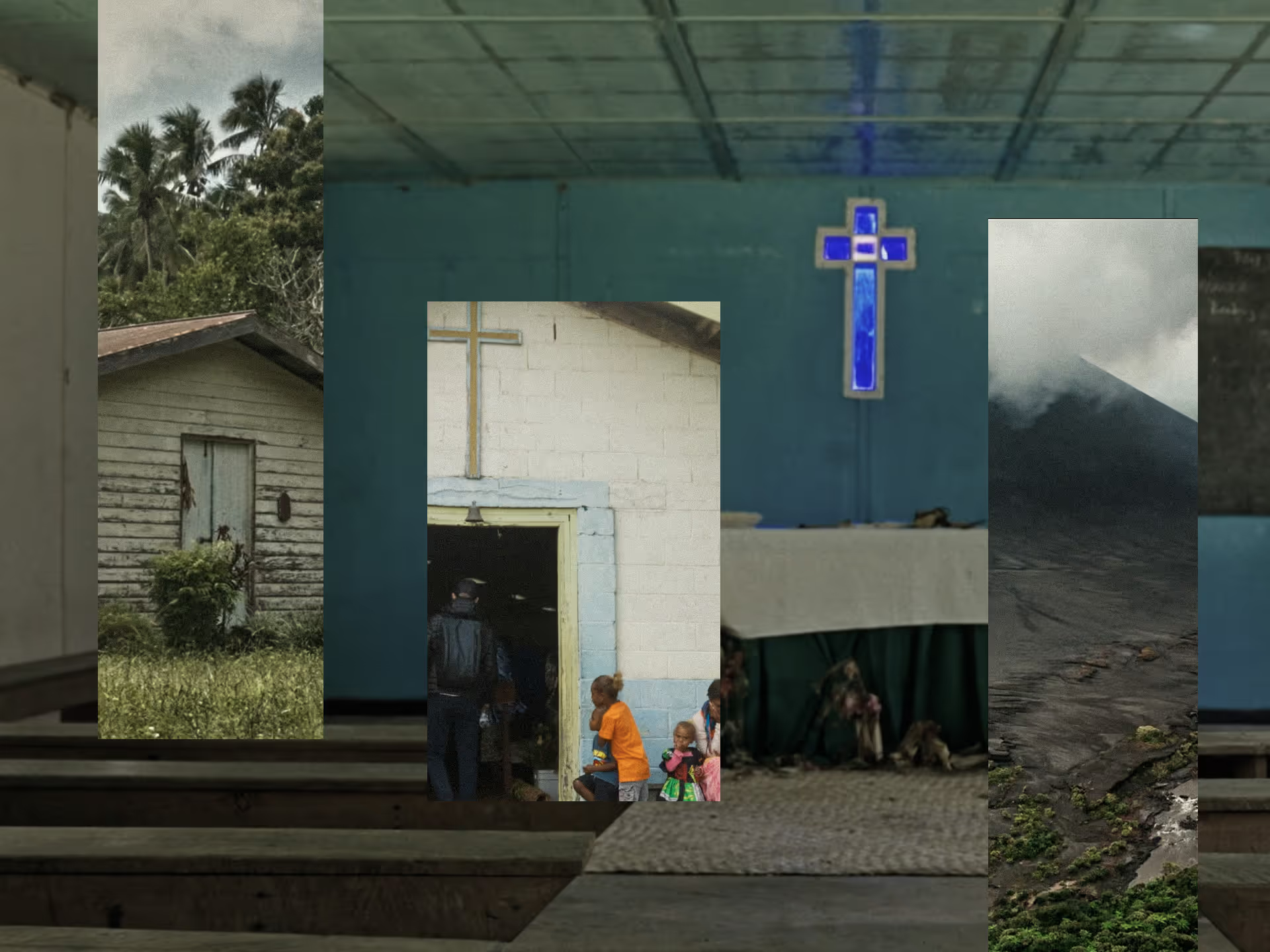Why We Tell These Stories

In Vanuatu, once known as the New Hebrides, weathered churches still stand among the volcanic landscape as quiet monuments to the legacy of missionaries like John G. Paton. The rugged environment where he ministered remains largely unchanged, a place that demanded much from those who brought the gospel. Yet, the hardships they endured only scratch the surface of the deep, generational sacrifice that missions require.
But this post isn’t meant to argue for the importance of missions. That’s something many of us already understand on a deep level. It also isn’t about defending the worth of the gospel. Its value is beyond question for those who follow Christ. Instead, this is about something else: why we tell stories about missions and about the gospel, why we go to such great lengths to capture them on film, and why that matters now more than ever.
A Creative Calling
Before stepping into this kind of storytelling, I worked as the director of web design and development at a creative agency. We partnered with organizations like International Justice Mission and Museum of the Bible, pouring creative energy into websites that were works of art. Every detail, from the imagery to the buttons to the interface, was thoughtfully crafted to serve its users well.
But no matter how much care we invested, every site was temporary. Technology changes, and every few years websites need to be redesigned or replaced. First it was adapting to mobile, then accommodating different screen sizes, then transitioning to apps. Eventually, it started to feel like everything I made was disposable.
The Shift to Storytelling
It was around that time I began to reflect on something more lasting: film. I remembered how every Christmas my mom would watch It’s a Wonderful Life, the 1946 black and white classic. Despite its age, it still moves hearts. Why? Because film has a permanence that transcends trends. Unlike a website, it can carry a message across decades.
That realization was a turning point. I joined our agency’s video team on production sets. At first just to observe, then to produce, then to film. Within a few years I was working with the video team full time.
I didn’t realize then that God was redirecting my heart and work. But looking back, it’s clear. As Proverbs 16:9 says, “The heart of a man plans his way, but the Lord establishes his steps.”
The Power of Story
We value storytelling because it helps us see things more clearly. A well-told story does more than recount events. Like the stories we read in God’s word, a profound tale reveals what matters, shows what is at stake, and invites reflection. It connects the past to the present in ways that facts alone often cannot, offering perspective and inviting people to respond with thoughtfulness and conviction.
That is what film can do. It does not just tell us “this happened.” It shows us why it mattered.
Not everyone is going to read all 384 pages of A Chance to Die, the biography of Amy Carmichael that Elisabeth Elliot wrote, but they might spend 45 minutes watching a film about why Amy Carmichael, after setting sail, never came home. A 45-minute story can reach hearts in ways that feel natural to our generation. It’s not that books have lost their power. It’s that fewer people sit with them like they used to. Film opens a door that invites you “further in and further up.” My hope is that what starts on screen will lead deeper—that viewers will become readers, will pick up the biographies, dive into Scripture, and rediscover the call to go, send, pray, and give.
C. S. Lewis once said that stories can “get past those watchful dragons”—the inner resistance, the over-familiarity, the cynicism that dulls our senses to the truth. Films help us smuggle truth into the heart, not by trickery, but through beauty, story, and witness.
Why It Still Matters
We are living in a moment when global missions can feel distant, chronologically and geographically, to many of us in the Church. There is increasing talk about rethinking it, about focusing more at home, and, in some circles, even questioning whether missionaries should go at all.
We made the Missionary docuseries not just to preserve history, but to challenge that drift within the Church.
Missions is not a closed chapter in church history. It is the ongoing story of what Christ is doing through His Church today. It is not trendy. It does not go viral on social media. But it is true. Through these films, we can bring that truth into living rooms, youth groups, and Sunday school classes—into hearts that have grown distracted or comfortable with the status quo.
As we make these Missionary films, we do not film to impress or persuade through spectacle. We film to bear witness, to show what faithfulness looks like across cultures and generations. Our goal is not hype but truth. Through these stories, we hope to stir the church to remember that Christ is worthy of worship in every language, in every place. That is why we film. That is why we tell these stories.